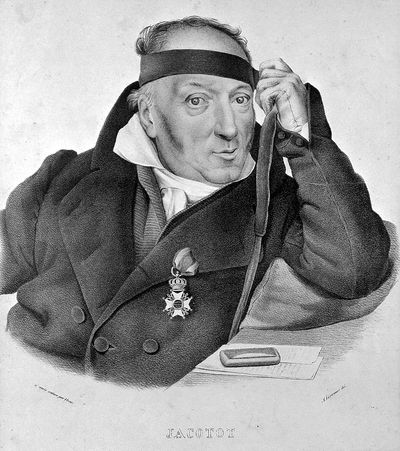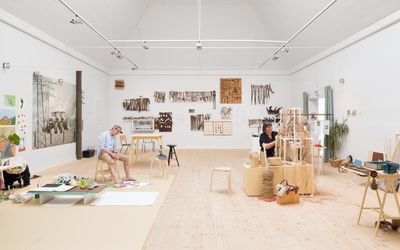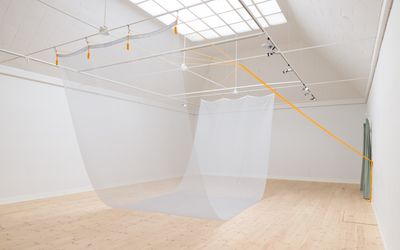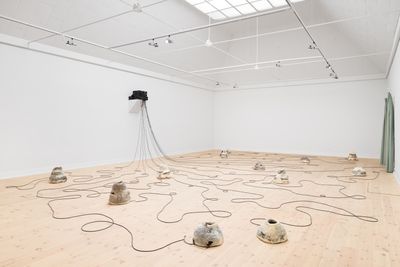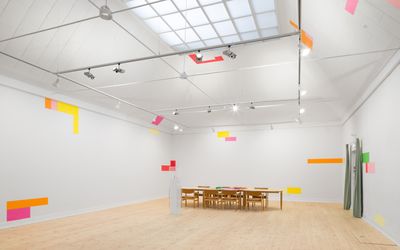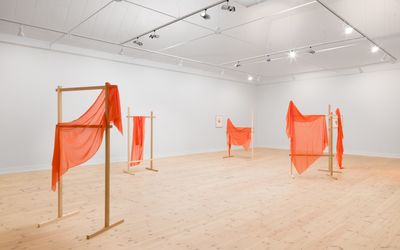Den uvidende lærer
–
–
Listen to podcast about The Ignorant Schoolmaster
This exhibition is based on the book The Ignorant Schoolmaster – Five Lessons in intellectual Emancipation written by the French philosopher Jacques Ranchière in 1987. Just as the book, the exhibition consists of five chapters.
Curator Mikkel Elming has invited five artists who each over the span of two weeks must create artistic reactions to the content of the book. The artists have also been asked to involve social groups of their choice in their works, which have been addressed in very different manners.
The book represents a radical break away from traditional teaching methods. In the spirit of the book, the exhibition is a curatorial experiment that examines how a book may be translated into an art exhibition, exploring the relationships between art, institution and the art experience.
To coincide with the exhibition, Kunsthal Aarhus has reissued the book The Ignorant Schoolmaster in collaboration with the publisher Antipyrine. The book is available for purchase from Café Kunsthal and on the Antipyrine website. The exhibition is also accompanied by a podcast of the same name as the exhibition and can be accessed on our website or the podcast platform available to you.
The Ignorant Schoolmaster is curated by Mikkel Elming.
11.09.-27.09.2020 Chapter I
Listen to podcast about chapter I of The Ignorant Schoolmaster
Jette Gejl Kristensen with Birthe Steenbech Andersen, Lise Rendbæk, Steffen Holm, Stefi Pedersen, Elsebeth Lerche Olsen and Adam Mønster
The first chapter of the exhibition was orchestrated by Jette Gejl Kristensen. She took inspiration from tool boards that she inherited from her childhood home Skovbjerggaard. In the old days, Gejl Kristensen’s father Ove had turned a barn from the farm into a self organised museum of agriculture, in which the tool boards were part of the exhibition. His dissemination of the tools was untraditional. He told the history of the tools from a human perspective.
”This adjustable spanner was owned by this guy from the farm, where the barn burned down, and he was the son of...”
The history of Skovbjergaard’s Museum of Agriculture is the story of an emancipated museology, in which storytelling and human relations are emphasised more than explanations.
The father’s dissemination of the museum inspired Gejl Kristensen to work with the learning of craftsmanship in relation to Joseph Jacotots emancipated learning method. She invited six people to work with the exhibition over the span of two weeks, working with different crafts which neither she nor the participants were familiar with. Ove’s tool boards hung on the end wall of the gallery as a reminder to the participants to maintain the emancipated approach to their work.
During the first chapter of the exhibition, you could observe Stefi Pedersen work with clay, Elsebeth Lerche Olsen work with poetry and percussions, Birthe Steenbech Andersen work with linocut and woodcut, Lise Rendbæk work with driftwood and rust, Steffen Holm work with collage, Adam Mønster work with his feet and Jette Gejl Kristensen herself work with macramé.
29.09.-11.10.2020 Chapter Il
Listen to podcast about chapter II of The Ignorant Schoolmaster
Lisa Nyberg
In the second chapter, the gallery is taken over by a large textile work by Lisa Nyberg. The work will provide a framework for so-called critique classes organised by the city's art schools. Critique classes are a form of teaching that is widespread at academies throughout the world, where the students learn to talk about art without judging whether a work is good or bad.
Lisa Nyberg about the exhibition:
"The Sling is a space of study held by its participants. It is a curved space, a holding space, a carrying space. A sling to hold and support what might otherwise break. It is a simple support structure of rope and fabric that is held in suspension by the hand of one to eight people. Entering the space is taking the risk that it might all fall down. At any moment we can let it go, release the tension, undo the curve. We will have to agree on how to hold space for each other.
The Sling is mainly meant to be used for critique classes – a form of teaching essential to arts education. This is where we share our work with each other and subject our doing to judgement. It is where we learn how to talk about art, how to analyse it, fight for it, understand it through the eyes and ears of others. It is a tense and vulnerable space. It is also an arena where many of the struggles for the definition of what art is, and can be, plays out; for the right to artistic freedom, for complex and nuanced work, for work that holds resistance and opacity, for experimentation and failure.
In the spirit of Jacques Rancière, we will become each other's ignorant schoolmasters. We will “... instruct the learned one as well as the ignorant one: by verifying that he is always searching. Whoever looks always finds. He doesn’t necessarily find what he was looking for, and even less what he was supposed to find. But he finds something new to relate to the thing that he already knows.” With The Sling, I make an argument for the suspension of judgement as a fundamental pedagogical effort. The process of understanding artistic work comes to a halt the moment we judge. It marks the beginning of the end of the conversation. So it is important that we extend that period of time and expand that space as much as possible. That we hold the suspension. The many ways to do this will be explored during the exhibition with a group of local artists and art students"."
13.10.-25.10.2020 Chapter Ill
Listen to podcast about chapter III of The Ignorant Schoolmaster
Olga Benedicte
In the third chapter of the exhibtion, Olga Benedicte presents the installation The Cymatic Orchestra.
Cymatics is the scientific study of the relation between sound, bodiliness and visuality. It deals with the influence of sound waves on physical material, for instance the way a speaker vibrates, or the patterns that sound can create in fluids. Simultaneously, cymatics is a term that describes therapy methods that utilise sound to affect the body.
The sculptural orchestra consists of 13 soap sculptures with incorporated speakers that play vibrations generated by human bodies. The composition alternates between polyphony and monotony and between an authentic nerve of masculine and feminine sound waves. No words, just the sound of voices. No explanation, just the experience.
You can hear a segment of the composition at the end of the interview with Benedicte and you can hear the interview on the player above or on the podcast platform available to you (search ”The Ignorant Schoolmaster”)
Benedicte’s work is always a result of her interest in corporeality. She was particularly inspired by a specific paragraph for this exhibition:
”I want to look and I see. I want to listen and I hear. I want to touch and my arm reaches out, wanders along the surfaces of objects or penetrates into their interior; my hand opens, develops, extends, closes up; my fingers spread out or move together by obeying my will. In that act of touching, I know only my will to touch. That will is neither my hand, nor my brain, nor my touching. That will is me, my soul, it is my power, it is my faculty. I feel that will, it is present in me, it is myself; as for the manner in which I am obeyed, that I don’t feel, that I only know by its acts. (…) I consider ideation like touching. I have sensations when I like; I order my senses to bring them to me. I have ideas when I like; I order my intelligence to look for them, to feel. The hand and the intelligence are slaves, each with its own attributes. Man is a will served by an intelligence.”
The Ignorant Schoolmaster – Five Lessons in Intellectual Emancipation, page 90-91
This excerpt is a modification of the paragraph from René Descartes’ Meditations on First Philosophy. In this paragraph, Descartes, roughly speaking, attempts to convince his teacher that our senses are deceitful and do not tell anything about the true nature of objects. This is however not the point for Rancière. On the contrary, he argues that this fumbling for something, which is described in the paragraph, is the way to learning – and the truth.
For Olga Benedicte, the paragraph was something special because it revolves around an I’s experience of a piece of wax. Benedicte’s own interest in non-verbal communication leads to the fact that she suffered from reduced hearing in the beginning years of her life, which showed to be caused by wax in her ear canals.
27.10.-08.11.2020 Chapter IV
Listen to podcast about chapter IV of The Ignorant Schoolmaster
Jakob Jakobsen with Center for Art and Mental Health: Anna Rieder, Frejahassel Nanet Sommer, Simon Egeskov, Nina Bruun, Louise Fritzsche, Claus Poulsen og Birgit Bundesen.
The fourth chapter of the exhibition commenced with a small intervention in the architecture of the white showroom. Jakob Jakobsen hung coloured A4 sheets in the ceiling and corners of the gallery. The hanging of the sheets was inspired from another intervention that Jacobsen carried out in his hospital ward during a psychiatric admission.
He began with hanging a red A4 sheet up on his door to remind himself to do balance exercises every day. The sheet became a parking space for his gaze. With time, several sheets were hung on the walls, so his gaze had more to rest on. One day, a nurse told him that sometimes, there were patients so ill that they were incapable of asking for help:
“They get a red piece of cardboard. If they feel they need help, they should walk up the aisle with the red card in the hand, so the staff understands that the person is asking for help. Sometimes it can seem insurmountable to just ask for a glass of water. She probably was joking but she said that she didn’t think there was anything written in my journal about me using colored cards to communicate with.”
Jakob Jakobsen: Ending Rebellion – Diary of an Admission, page 76
Jakob’s intervention became a way of communicating. It became a way to break with and conquer the architecture of the hospital, and thus break with the interior created for the sick and dying body.
In chapter IV of The Ignorant Schoolmaster, Jakob transferred the experiment to the art institution, of which the architecture, like the hospital, constitutes a particular ideology. The intention with his intervention is to ‘deinstutionalize’ the space and to create a safe environment that serves as a frame for a writing workshop with the psychiatric users from the recognised Center for Art and Mental health.
The Center works in the intersection between psychiatry, art, humanities and neuroscience through collaborations with researchers, artists and psychiatric users.
Jakob Jakobsen has published, in connection with the exhibition, his book ‘Ophør, oprør, dagbog fra en indlæggelse’, which can be purchased in the café of the art hall and on Antipyrines webpage.
10.11.-22.11.2020 Chapter V
Listen to podcast about chapter V of The Ignorant Schoolmaster
The fifth and last chapter of the exhibition was orchestrated by Louis André Haugaard Jørgensen. The chapter consisted of three parts that in different ways deal with translation, language and bias in connection to gender and identity: a performance with five monologues in five different languages, a book that compiles these monologues, and a series of five watercolour portraits of five different stones.
The performance and book are titled Soy Milk, and are based on a text written by Haugaard Jørgensen, where an I tells about being in an apartment, listening to the neighbour through the wall, talking on the phone with its father, reading emails and chatting with a friend, who lives on the other side of the Atlantic.
The monologue has been through a chain of translation: from Danish to Norwegian to Swedish to English to German and back to Danish. The book features these five translations, which in the performance are performed by five different performers. The language flows through several channels, and is communicated and miscommunicated, interpreted, retold and assumed.
Neither the gender of the narrator nor the neighbour are described in the text, and this uncertainty is translated differently in the different languages, thus illustrating how each language facilitates certain frames to understand and express gender that exists beyond the binary.
Haugaard Jørgensen’s interest in personal pronouns is also portrayed in the five watercolour paintings, which are portraits of stones with different words written next to it. The words are personal pronouns taken from the book ”What’s Your Pronoun”, which uncovers how the problematics of gender-including pronouns have been treated in the English language through decades.
Therefore, all of the artworks in the fifth chapter deal with translation, language, and bias in connection to gender and identity.
18.11.2020 Public evaluation
Public evaluation with the artists Jette Gejl Kristensen, Lisa Nyberg, Olga Benedicte, Jakob Jakobsen og Louis André Haugaard Jørgensen and curator Mikkel Elming.
Supported by


